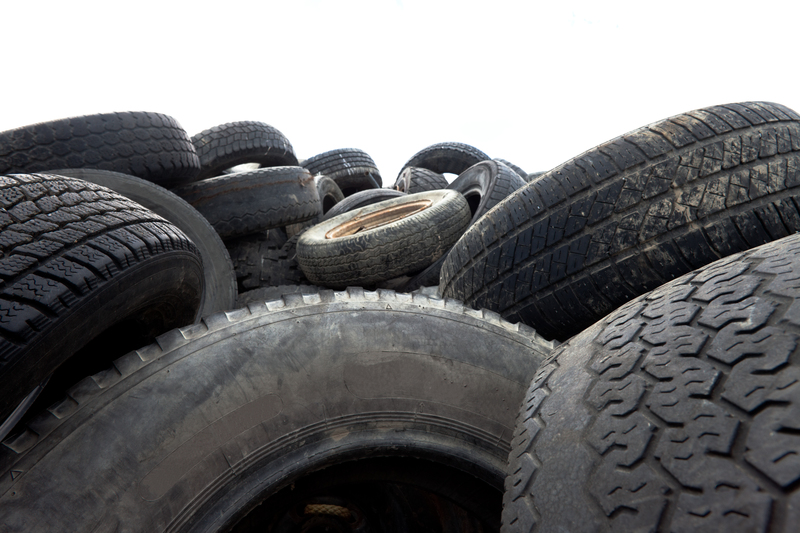The Science Behind Efficient Glass Recycling
Glass recycling has garnered significant attention in recent years due to its potential to significantly impact environmental sustainability. The science behind efficient glass recycling not only encompasses the process of turning discarded glass into new products but also involves understanding the chemical and physical properties that make glass an ideal candidate for endless recyclability.
The Importance of Glass Recycling
Before delving into the scientific aspects of glass recycling, it's crucial to recognize why recycling glass is essential. Unlike plastic, which degrades in quality upon each recycling cycle, glass can be recycled indefinitely without losing purity or quality. This trait makes glass an exceptional material for sustainable use. By efficiently recycling glass, we can reduce the raw materials needed, save energy, and lessen the environmental impact of glass manufacturing.
Understanding Glass as a Material
To appreciate the science of glass recycling, it's essential to understand what glass is. Glass is primarily made from natural substances like sand (silicon dioxide or silica), soda ash (sodium carbonate), and limestone (calcium carbonate). These raw materials are heated together at extremely high temperatures to form a versatile and durable material known as glass. Here are some reasons why glass is perfect for recycling:
- Inert Nature: Glass is chemically inert, meaning it doesn't react with other substances, making it ideal for storing a variety of products.
- Non-Toxic: Glass does not leach chemicals, which is advantageous for both food storage and environmental health.
- Infinite Recyclability: Glass can be melted and reformed indefinitely without degradation.

The Glass Recycling Process
The process of glass recycling involves several stages to ensure the glass material is prepared effectively for reuse. Each step is crucial to achieve efficient glass recycling:
Collection and Sorting
Glass recycling begins with the collection and sorting of glass materials. This is a critical stage as different types of glass, like container glass and flat glass, require separate processing.
- Color Sorting: Glass containers are usually sorted by color (clear, green, and brown) because glass retains its color throughout its life cycle. The color of new glass is influenced by the color of the glass cullet (recycled glass) used in its production.
- Quality Control: Contaminants such as metal caps, labels, and non-recyclable glasses like ceramics are removed to maintain the quality of the recycled glass.
Crushing and Cleaning
Once sorted, the glass is crushed into small pieces known as cullet. This reduction in size helps with the melting process and ensures a lower energy requirement for its conversion.
- Magnets and Screens: Advanced methods like magnetic separation remove metal fragments, while screens ensure uniform sizes of cullet.
- Washing: Cullet undergoes thorough washing to eliminate impurities, further ensuring the quality of the recycled glass.
Melting and Reforming
The cleaned cullet is then added to raw materials and heated in a furnace. The high temperatures cause the materials to fuse into a molten state, ready to be reformed into new glass products.
- Energy Efficiency: Utilizing recycled glass cullet in the melting process significantly reduces the energy required (by about 30%) compared to using raw materials alone.
- Product Formation: The molten glass can be molded into various shapes, such as new bottles and jars, maintaining the quality of the materials.
Scientific Advances in Glass Recycling
Recent advancements in technology and science have further enhanced glass recycling processes:
Automated Sorting Technologies
Advanced sorting technologies utilize sensors for more accurate identification and sorting of glass types. These systems minimize human error and increase the efficiency and purity of the recycled product.
Innovations in Melting Techniques
Improvements in furnace designs and melting methodologies focus on reducing emissions and energy consumption. For instance, the use of oxygen-fueled furnaces instead of air-fueled ones decreases pollutant release.
Better Use of Recycled Glass
Innovative applications for recycled glass cullet include using it as an aggregate in concrete or in asphalt for road construction, expanding the reach and utility of recycled glass beyond traditional boundaries.

The Environmental Impact of Glass Recycling
The benefits of glass recycling extend beyond economics to significantly impact environmental conservation:
- Reduction in CO2 Emissions: Recycling glass reduces carbon dioxide emissions by eliminating the need for raw material extraction and processing.
- Conservation of Natural Resources: Each metric ton of glass recycled saves over a ton of natural resources, precious for preserving ecological balance.
- Energy Conservation: As mentioned, the energy consumption decreases significantly when using cullet as opposed to virgin materials.
Challenges and Future of Glass Recycling
While the benefits are evident, glass recycling faces several challenges:
- Contaminant Removal: Effectively removing non-glass materials is a perpetual issue that affects the quality of recycled glass.
- Economic Factors: Fluctuating demand for recycled glass affects the financial viability of recycling operations.
- Public Awareness: Educating consumers about the importance of correct segregation and proper disposal of glass is crucial to enhancing recycling rates.
The Road Ahead
The future of glass recycling looks promising with ongoing research focusing on increasing efficiency and exploring new recycling methodologies. Enhanced collaboration between government bodies, recycling industries, and the public will be vital in overcoming existing challenges and reaping the full benefits of a well-established glass recycling system.
In conclusion, the science of efficient glass recycling is an evolving field that plays a pivotal role in promoting sustainability and environmental stewardship. By understanding the processes and innovations involved, stakeholders can contribute effectively to this eco-friendly activity, ultimately paving the way for a greener future.